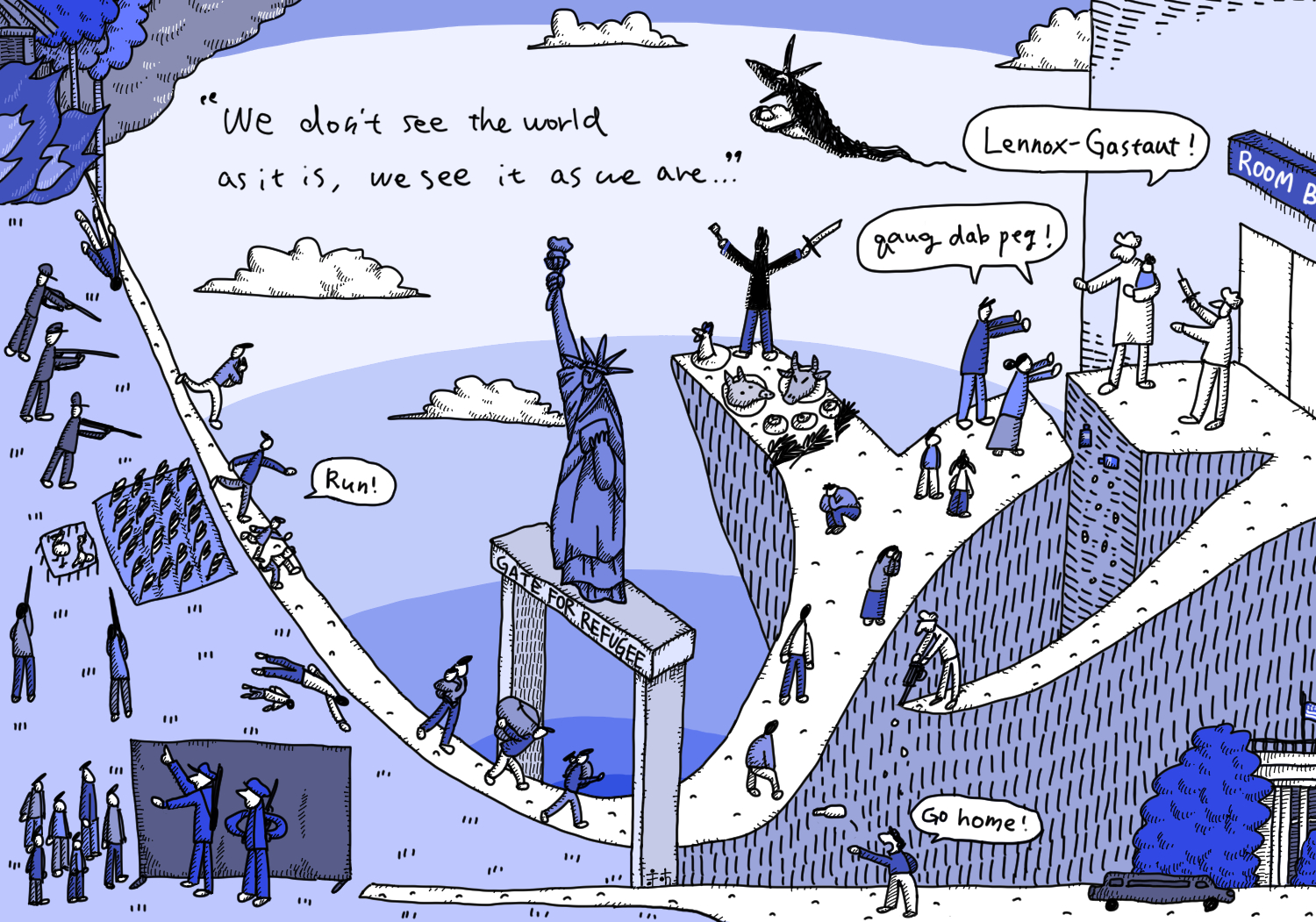
The Spirit Catches You and… You Go Where It Takes You
For the past 18 months, I have had the pleasure of being part of the CSEAS community as a Postdoctoral Fellow for the Japan Society for the Promotion of Science (JSPS). At CSEAS, I am drawing on the ethnographic data I have collected in Malaysia over the past decade from studying polygyny1), to understand how women resort to supernatural means such sorcery and black magic (sihir) to monopolize access to the husband’s (usually insufficient) economic and emotional resources in the marriage. My research up to now has addressed the patriarchal inclinations in Malaysian Islamic Family Law that enable increasingly less wealthy men to marry more wives. I have shown how the husband’s limited resources often lead to emotional and financial neglect of women and children in polygyny, wreaking havoc within the family and also in society at large. But what other(-worldly) forces are at play in the volatile and changing family dynamics in Malay polygynous families? How do narratives involving spirits, potions, and inexplicable illnesses help Malays make sense of their family life and (mis)fortunes?
My anthropological interest in the supernatural can perhaps be traced to my undergraduate days studying anthropology at the University of Western Australia in Perth, Australia. During this formative period as a budding anthropologist, I recall taking a course on Medical Anthropology, where we were assigned to read Anne Fadiman’s The Spirit Catches You and You Fall Down (1997). In this book, the author follows the journey of a Hmong refugee family in America as they struggle to navigate two vastly different cultural systems—Western medicine and Hmong traditions—in an attempt to save their daughter, Lia, from fatally succumbing to her epileptic seizures. The doctors treating Lia thought she was suffering from a particularly severe form of epilepsy known as Lennox-Gastaut Syndrome. Her parents, on the other hand, interpreted these seizures as quab dab peg (literally meaning, “the spirit catches you and you fall down”) —the Hmong term for epilepsy. This condition is believed to be caused by the spirit separating from the body, and it is a shaman’s job to put the two back together. For the Hmong people, Lia’s condition was a sign that she was spiritually special: though they knew epilepsy could be deadly, the seizures were also seen as moments in which a healing spirit enters the body, imbuing the person with shamanic potential that could be of great service to the community.
The clash of cultures depicted in this book made me seriously consider the plurality of worldviews that could co-exist—at times in concordance with, and at times in conflict with each other. Inspired by Anne Fadiman’s work, I put on my medical anthropological glasses to study the stories of sorcery I had heard in Malaysia, which became the subject of my final paper for this course. In the paper, I considered how certain phenomena or physical illnesses that have a perfectly plausible medical explanation can also be interpreted by Malays as having a supernatural or spiritual cause. A person’s persistent coughing, for example, could be a sign of respiratory issues in the body, but it could also be the result of having extensively consumed “contaminated things” (benda kotor) —that is, food imbued with magical potions or enchanted ingredients.
Anne Fadiman’s book was therefore foundational for me in many ways: I learned that anthropology as a discipline could equip me with the tools to dissect my own preconceived notions and religio-cultural beliefs as a Malay-Muslim woman, which subsequently led me to write a PhD on Malay polygyny at Cambridge. It is also in the spirit—pardon the pun—of pursue the supernatural that I have found myself on my current intellectual journey of discovery along the Kamogawa…
Note
1) Polygyny is a form of multiple marriage in which a man is married to two or more women simultaneously.